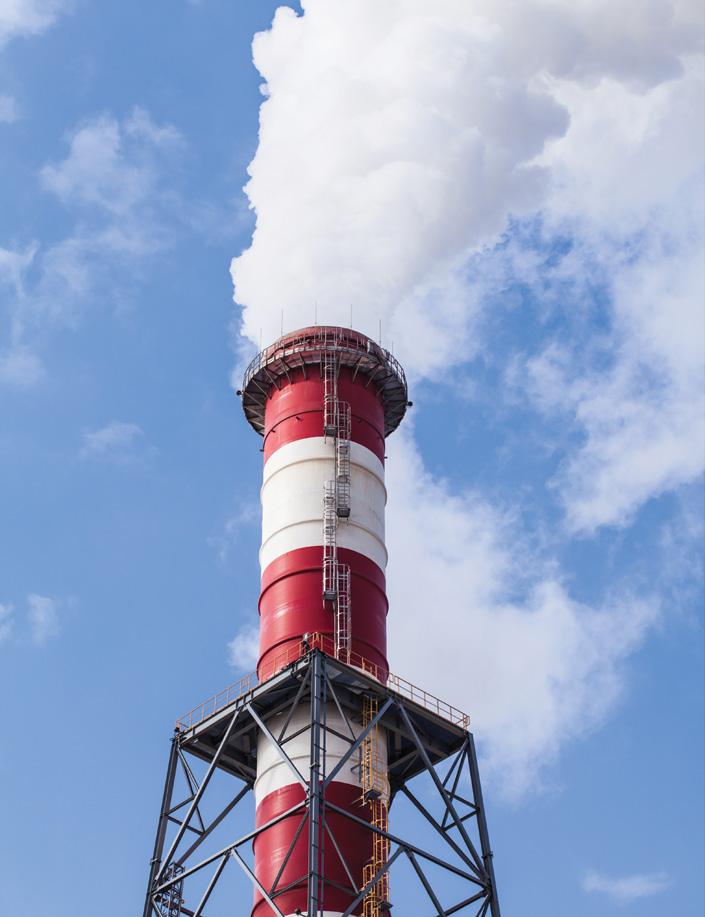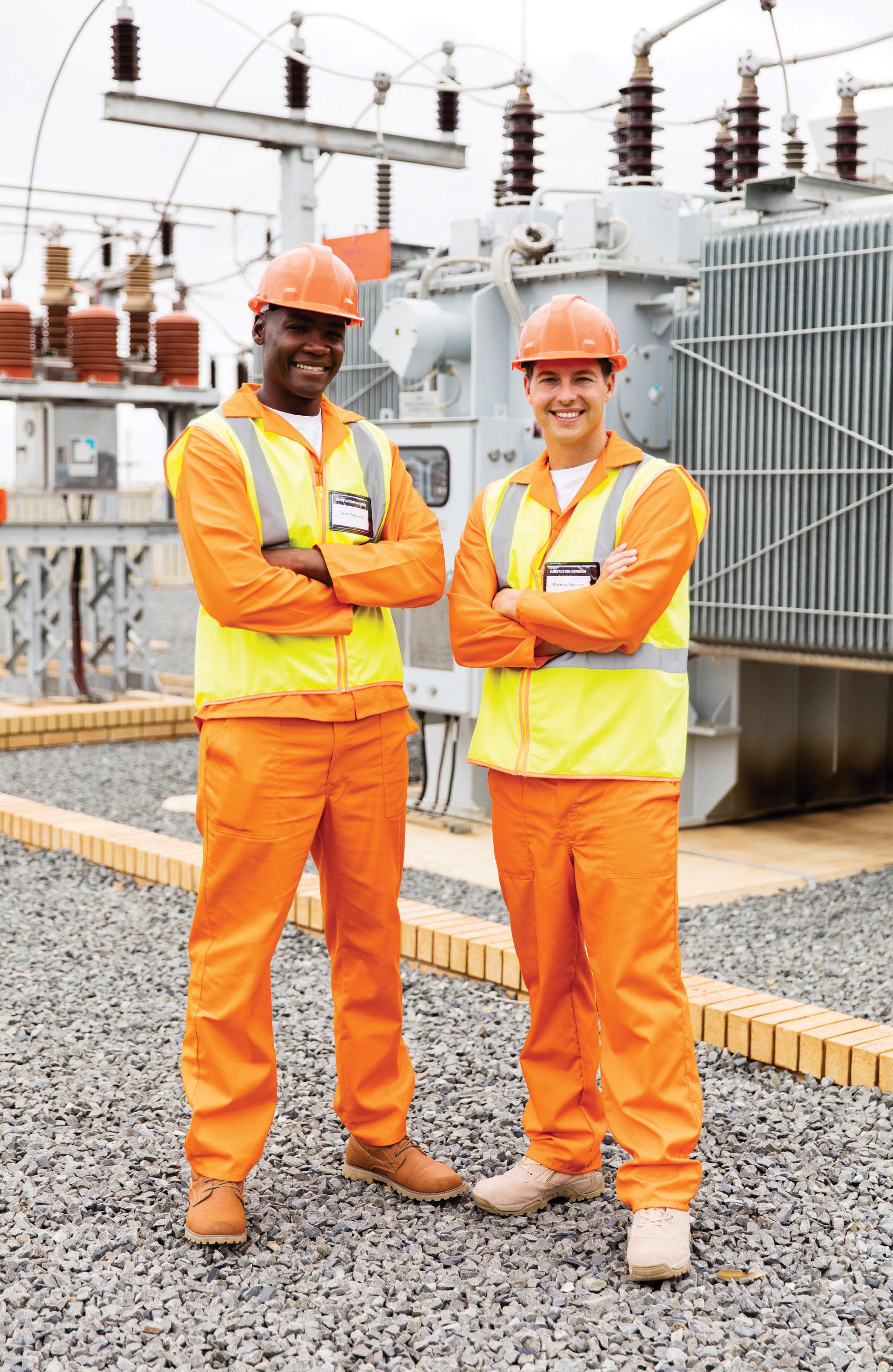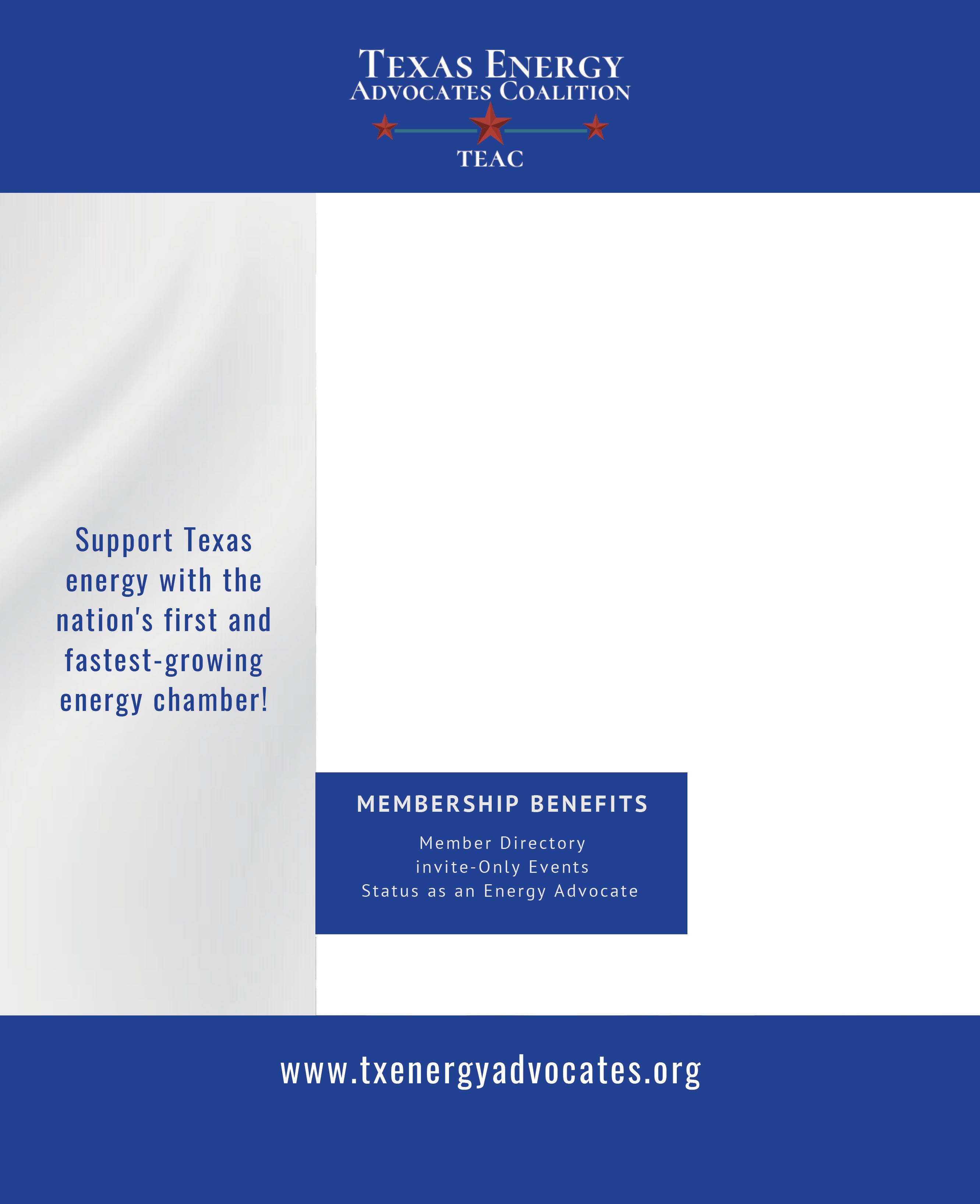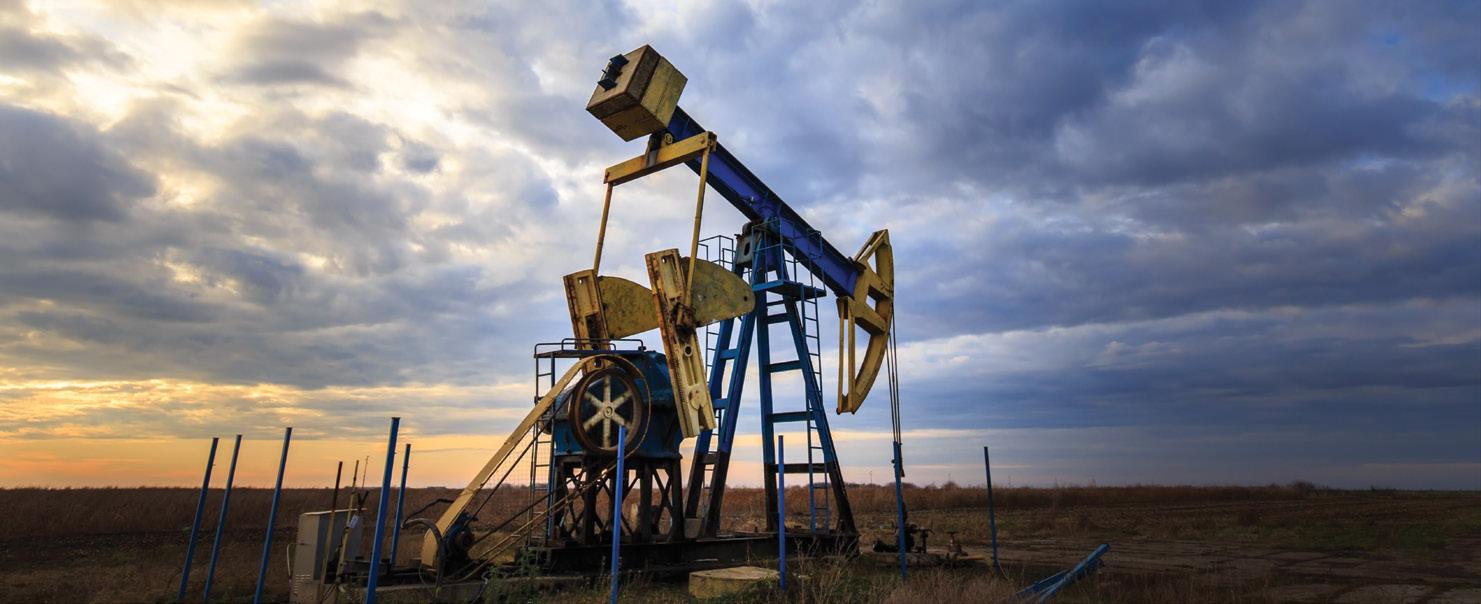
8 minute read
Managing Emissions with Carbon Twin Technology
By: Thor Schueler
The COP26 global climate summit earlier this month in Glasgow, Scotland, put the spotlight on the urgency to act on climate change. President Joe Biden promised his administration would heavily regulate methane, and for the first time, the Environmental Protection Agency is poised to limit the methane coming from existing oil and gas wells in the United States instead of only new wells. Regardless of how one views the policy coming out of D.C., the goal of netzero carbon emissions is one that, as parents, children and humans, we all should aspire to.
Advertisement
As the industry wrestles with the uncertainty of a changing landscape, regulators and oil and gas processors need to reach a consensus on where they are before moving toward a common goal. If a company commits to net-zero carbon emissions by 2035, how does it accurately measure its footprint in order to deliver and show tangible progress along the way? How reliable is the data we are collecting, analyzing and acting upon? Oil and gas producers, and the regulators who oversee them, face increasing market pressure of both public opinion and tightening regulation around the world. The key to meeting this enormous challenge is creative problem-solving. Moreover, to be successful, a scalable approach must be integrated into our daily operations, not a spurious add-on.
Avanade and other leaders are introducing the concept of a Carbon Twin to help the oil and gas industry incorporate the emission net-zero journey into daily operations by helping both optimize operational emissions and prevent incidental emissions. Building on digital twin approaches and leveraging ongoing initiatives to optimize operations, a carbon twin allows you to model the emissions footprint of facilities and entire value chains.
The current methods of measuring for compliance do not translate directly into curbing carbon emissions because a facility generally bases its scoring on just two or three days of data per year, relying on a variety of discrete measurement tools to capture that data. The actual level of emissions can vary significantly due to variances in equipment load, operating profiles or even weather, rendering those readings inadequate measures of the effectiveness of carbon-footprint-reduction efforts. Moreover, measuring only tells us how we are doing at that very moment; it does not allow us to understand how certain actions and decisions might impact our carbon footprint.
A carbon twin, on the other hand, provides a better near-term option for improving estimate quality and forecasting the impact of operations decisions on the carbon footprint. It does so by modeling emissions of individual equipment or entire facilities based on easy to obtain operational telemetries such as temperatures, pressures, flow rates and more. Those can be used as proxies for the carbon equivalent emissions of a facility, much like we can use a magnetic field as a proxy for the current flowing through a conductor (albeit perhaps not quite as deterministic).
To create a carbon twin, we start by developing a carbon taxonomy of our value chain, identifying and classifying potential emitters. The carbon equivalent emitted from each emitter, in conjunction with operational telemetry ranging through various operating profiles would be measured in a controlled environment. Unlike in the field, a controlled environment allows us to easily measure the actual emissions associated with an operating profile, enabling us to develop physics-based and heuristic models for the equipment. Combined, these models constitute the carbon twin, which can now accurately estimate emissions for the facility deployed in the field using existing operating telemetry without expensive retrofits for real-time emissions measurement.
The oil and gas industry can’t control the impending policy changes, but it can control how to react and successfully meet the environmental challenges of the future and ensure that we leave the world a great place for future generations. Carbon Twin technology is an enabler for the industry on our journey to not only remain viable and profitable but to contribute significantly to the global effort of combating climate change. About the author: Thor is leading Avanade’s Innovation Lab and Experience Center in Houston and is responsible for driving innovation internally as well as with Avanade’s clients. Thor has developed innovative solutions and strategies for clients in Oil and Gas, Utilities, Retail, Manufacturing and Consulting.
Thor currently focuses on leveraging IoT, Digital Twinning, CH4 Emissions Detection and Management and Multi-party Systems to create innovative business solutions. He holds a Master’s Degree in Electrical Engineering from the University of Dresden in Germany and has conducted research as a visiting scientist at the Carnegie Mellon University Center for Machine Translation.


Oil and Gas World Market or Not?
By: David Porter
We often speak of oil and natural gas in one phrase, as if it is one commodity, but, in reality, they are two separate commodities. Their different characteristics may very well lead to different answers to the central question of this article. Before we dive into the specific answer to our main question, let us look at what constitutes a world market.
I am going to define a world market as one where the commodity has the same general availability worldwide at relatively the same price. Most of the variation in prices is explained by quality differences and differences in transportation costs. The quality differentials in oil generally revolve around density and sulfur content. The quality difference in natural gas typically relates to differences in BTU content, wetness or dryness, and amounts of sulfur and other impurities in the gas stream. The major factors that impact transportation costs are methods of transportation, the distance of transportation, and the terrain over which it is transported. Widely dispersed geographical locations and large numbers of producers and consumers certainly help make transportation costs more even across the globe.
Government action such as import and export restrictions and price controls can have major effects in the short run and intermediate-term. In the long run, I believe that markets prices ultimately prevail. The U.S. government, the Texas Railroad Commission and OPEC have all at various times and for various periods of time controlled (or at least had major effects on) the price of oil. However, if you have a diffusion of demand and/or supply when you have an artificial price, over time supply or demand or both will adjust to the point where the market price will reassert itself.
I think the facts will show that crude oil has been priced in a world market for at least the last 50 years. Certainly not a perfect world market, we only have to look back to the middle of the last decade before the repeal of the U.S. export ban when the gap between WTI and Brent (prices for certain grades of oil) was running $10 per BBL or higher — which is the exception, which I would argue proves the rule. Most of the time, oil prices around the world were close enough that we can say oil had a world market price. I would argue that natural gas has not been priced like it is part of a unitary world market. Transportation ease and cost are the major differences between the two commodities.
Crude oil can be transported by tanker, pipeline, truck and train. It is a liquid, high-value product with a well-established, widely spread transportation infrastructure spreading to most parts of the world where there is demand for and the ability to pay for the product. Crude oil is an important product of many different countries. On the other hand, natural gas is a gas (unless you incur substantial cost turning it into a liquid) lower valued than oil, without as extensive infrastructure for transportation as oil. Natural gas is widely produced as associated gas but is not as widely used all over the world as oil due to infrastructure problems. Pipelines transport gas efficiently and cheaply once they are built. However, it takes time and lots of money to build a pipeline, and it only makes sense to build pipelines from a place where there is a lot of production to a place where there is a lot of demand for the product.
Because of the cost of transportation and lack of infrastructure, I would consider that, unlike crude oil, natural gas had been sold in mainly regional markets. A decade ago, the cost of natural gas in the USA, or say for example Qatar, was quite a bit less than in South Korea or Japan. However, in my opinion, we are in the midst of a transformation that will probably take another decade or two to fully complete that will see natural gas being sold in a world market at a world price rather than a regional market at a regional price.
This transformation is being sparked by LNG. While the infrastructure to produce LNG is certainly expensive to build, it does reduce the volume of gas that would need to be moved into a much smaller volume of liquid that is easier to deliver to more areas than natural gas. The only thing I can foresee stopping this trend is if a number of governments continue their wars on fossil fuels and continue to throw legal and regulatory hurdles in the way of building the natural gas infrastructure. To close this article and answer the question we asked in the opening, I believe crude oil is truly sold and bought in a world market. Natural gas has been more of a regional market commodity, but because of LNG, we are in the midst of natural gas transitioning from being sold in a regional market to becoming a world market commodity.

About the author: David Porter has served as a Railroad Commissioner (2011–17) and Chairman (2015–16), as well as Vice Chairman of the Interstate Oil and Gas Compact Commission (2016). Prior to service on the Commission, Porter spent 30 years in Midland, Texas, as a CPA working with oil and gas producers, service companies and royalty owners. Since leaving the Commission, Porter works as a consultant for oil and gas companies. He also serves as Chairman of the 98th Meridian Foundation, a nonprofit concerned with water, energy and land issues.










